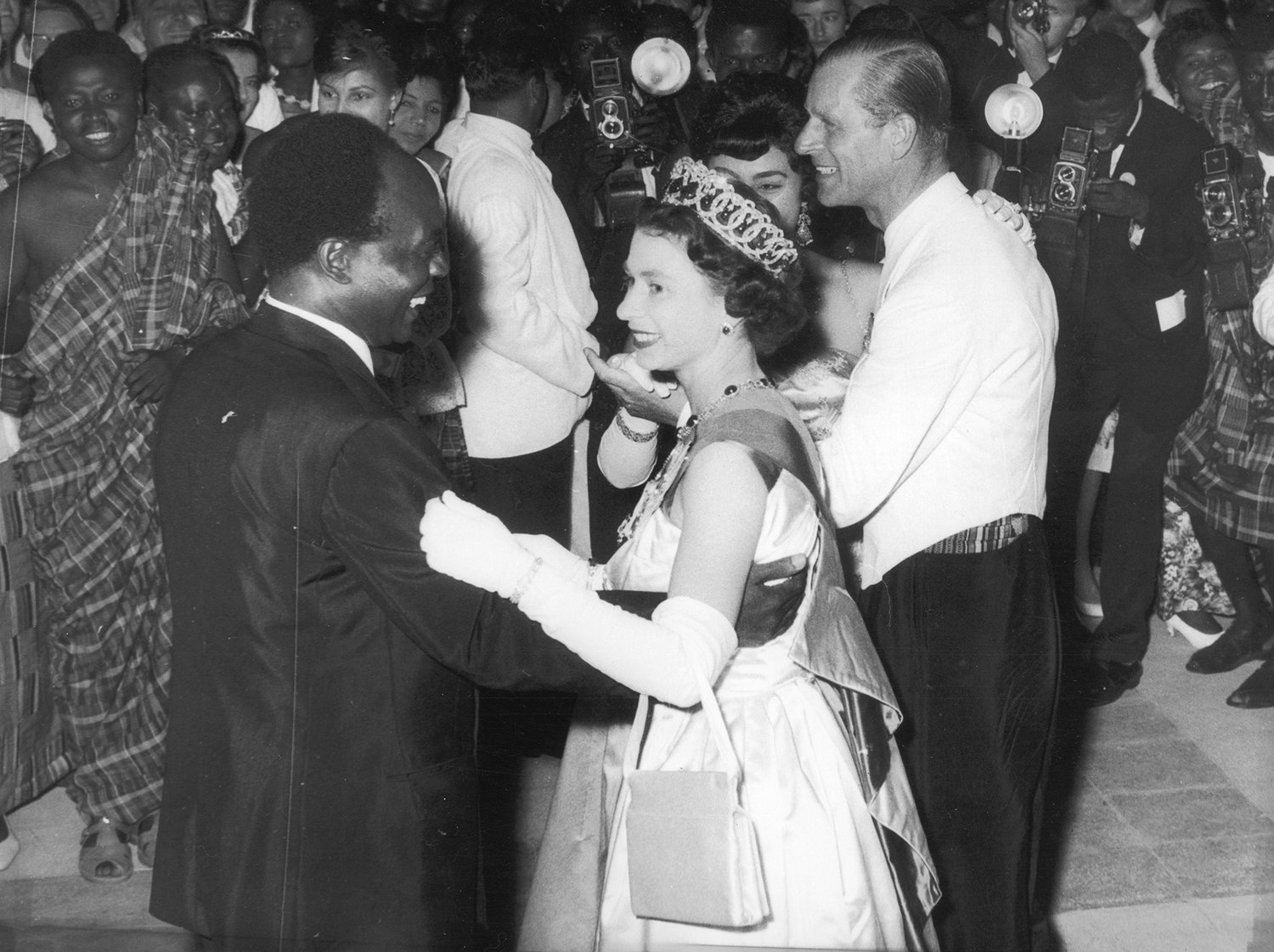NPR: What 'The Crown' Gets Wrong About the Queen's Visit to Ghana
The Netflix show says one dance changed history. The truth isn't so simple.
Queen Elizabeth II dances with Ghanaian president Kwame Nkrumah at a ball in Accra, Ghana, in 1961. (Central Press/Getty Images)
This story first appeared on National Public Radio.
It was a highlight of the latest season of the Netflix series The Crown, which chronicles the early years of Queen Elizabeth II's reign: The year is 1961, the Cold War is heating up and the queen (played by Claire Foy), feeling self-conscious after learning that First Lady Jackie Kennedy (Jodi Balfour) called her "incurious" at a dinner party, decides to take a more proactive role in dealing with Ghana, a former colony whose new leader, Kwame Nkrumah (Danny Sapani), appears to be getting too cozy with the Soviets.
Her solution: A dance with Nkrumah at a ball in the capital, Accra. The foxtrot, specifically, to the extreme, hilarious consternation of Prime Minister Harold Macmillan (Anton Lesser).
It's a high-stakes political gamble that could decide the balance of Soviet power in Africa, which in the early 1960s was fast emerging as a Cold War battleground. To everyone's relief, the dance is a success. The implication is that, in exchange for his photo op dancing with the queen, Nkrumah will "come back to the fold" and squash Soviet hopes for Africa. Later, JFK (Michael Hall) crows to Jackie that her jab at the queen precipitated a major foreign policy victory for the U.S. and U.K. It's the foxtrot that changes the course of history.
"Well, that's nice," says Nat Nuno-Amarteifio, an architect and amateur historian who served as mayor of Accra from 1994-98 and remembers the queen's supposedly fateful visit from when he was a teenage student. "It's a lot of bulls**t."
To keep reading, click here.
